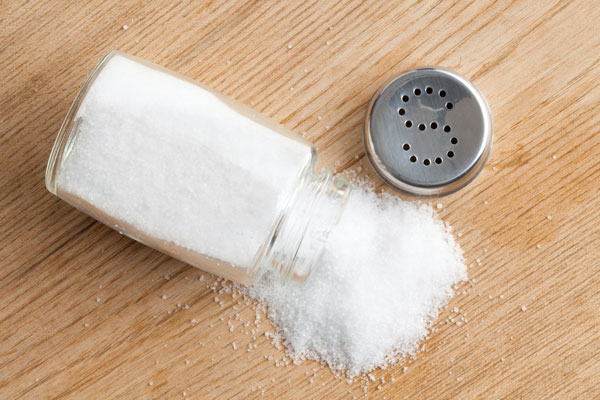Most Americans Still Eating Too Much Sodium
Nearly all Americans are consuming more sodium than they should, according to a new federal report.
More than 90 percent of children and 89 percent of adults eat more than 2,300 mg of sodium per day–the recommended limit set in the most recent dietary guidelines for Americans. Excess sodium in a person’s diet has been linked to high blood pressure and other health problems, according to the Centers for Disease Control and Prevention.
“The finding that nine of ten adults and children still consume too much salt is alarming,” said CDC Director Tom Frieden, M.D., MPH. “The evidence is clear. Too much sodium in our foods leads to high blood pressure, a major risk factor for heart disease and stroke. Reducing sodium in manufactured and restaurant foods will give consumers more choice and save lives.”
Controlling sodium intake is an important health issue nationwide.
About one in three U.S. adults–roughly 70 million people–have high blood pressure, but only half have it under control. Heart disease, stroke, and other cardiovascular diseases kill more than 800,000 Americans each year and cost nearly $320 billion a year in health care and lost productivity, a CDC news release states.
CDC researchers came up with the recent sodium findings by analyzing dietary data from a survey of nearly 15,000 people. One troubling finding is that sodium consumption is high among those who are at risk of heart disease.
Although researchers say excess sodium intake is a problem for all Americans regardless of age, race, gender and whether they have high blood pressure, some differences were found in the study:
- Among adults, a larger percentage of men (98 percent) than women (80 percent) consume too much sodium.
- About 90 percent of adult whites consume excess sodium compared with 85 percent of blacks.
- Estimated sodium and calorie consumption peaks between the ages of 19 and 50.
- Among people at greater risk of developing heart disease or stroke – such as people age 51 and older, African Americans and individuals with high blood pressure or pre-hypertension (blood pressure higher than normal but not in the “high” range) – more than three out of four exceed 2,300 mg per day.
- Adults with hypertension consume slightly less sodium than other adults, and may be trying to follow physicians’ advice to reduce sodium. However, 86 percent of adults with hypertension still consume too much.
Despite evidence and public health campaigns to educate people about the link between sodium and health problems, sodium consumption has not changed much over the past 10 years.
Federal health officials say a key strategy for lowering the amount of sodium in the public’s diet is to gradually reduce sodium in the food supply. More than three-quarters of sodium in the American diet is estimated to come from processed and restaurant food, which gives consumers little choice when it comes to lowering daily intake. While some food companies have begun to voluntarily reduce sodium in their products, others are being encouraged to take similar steps, the news release states.
The recent federal report also highlights the important role healthcare professionals can play in advising patients on how to limit salt in the diet.
“Sodium reduction is a key part of preventing heart disease and stroke,” said Sandra Jackson, an author of the report and an epidemiologist in CDC’s Division for Heart Disease and Stroke Prevention. “Reducing sodium is an achievable and effective strategy to improve heart health for everyone, but it’s going to take all of us working together to make it possible.”
Source: Centers for Disease Control and Prevention:
http://www.cdc.gov/media/releases/2016/p0106-sodium-intake.html

Comments are closed